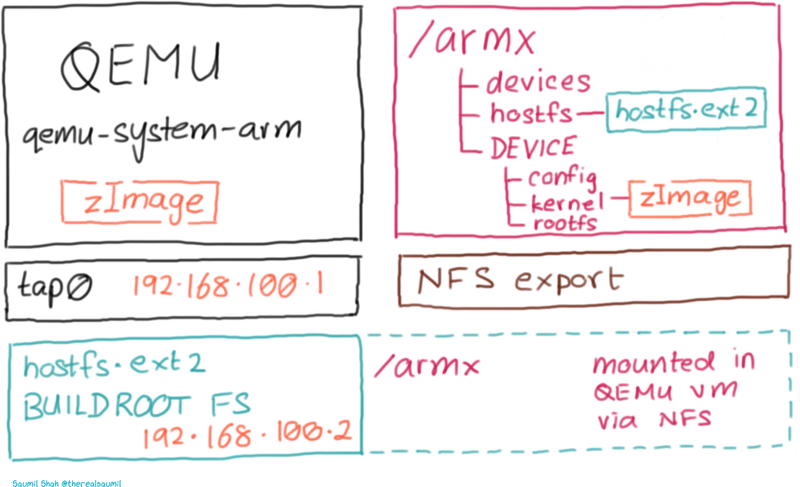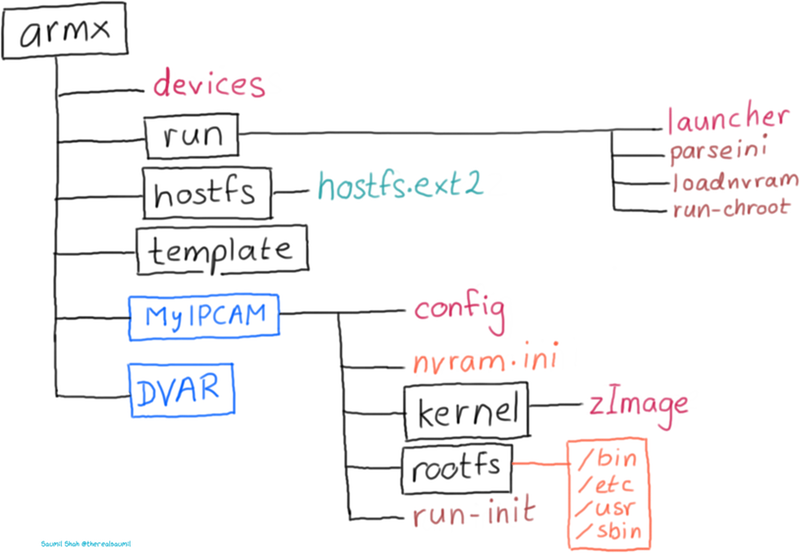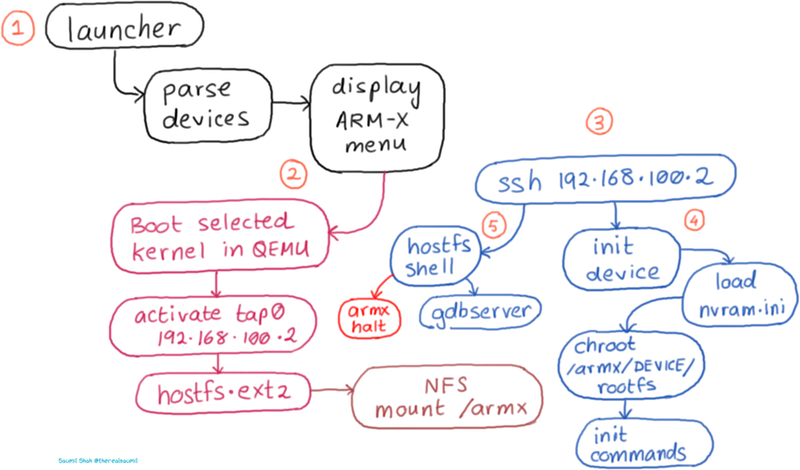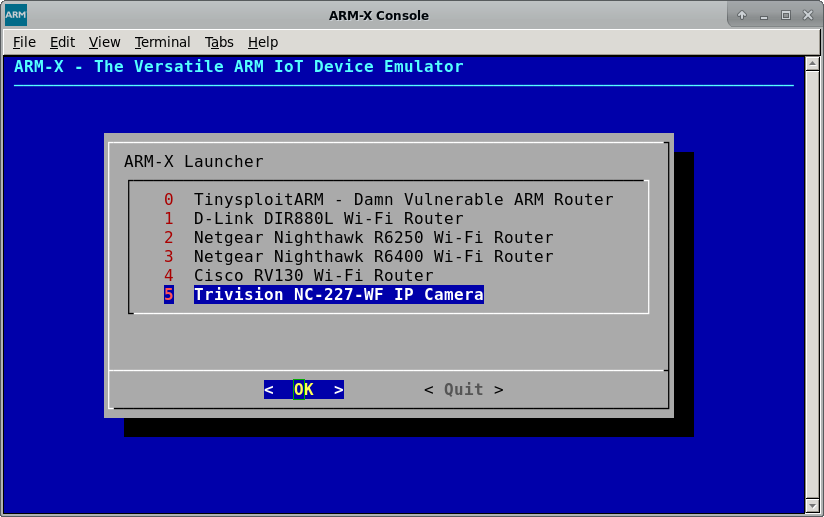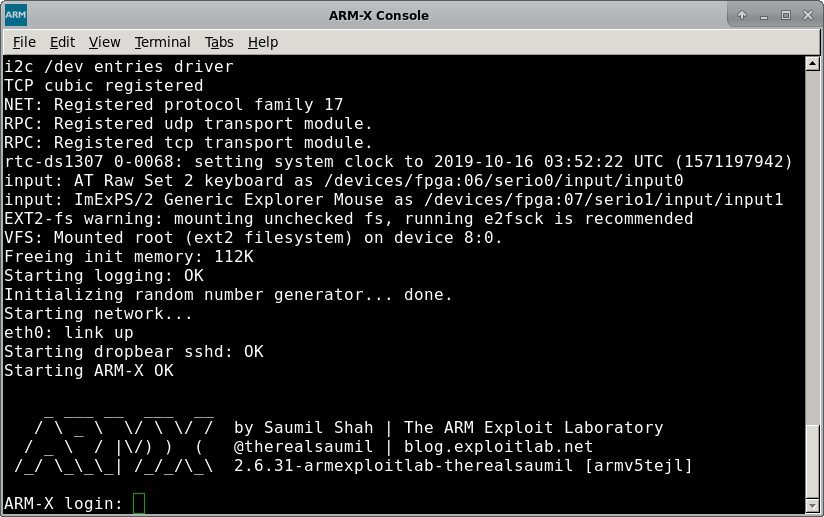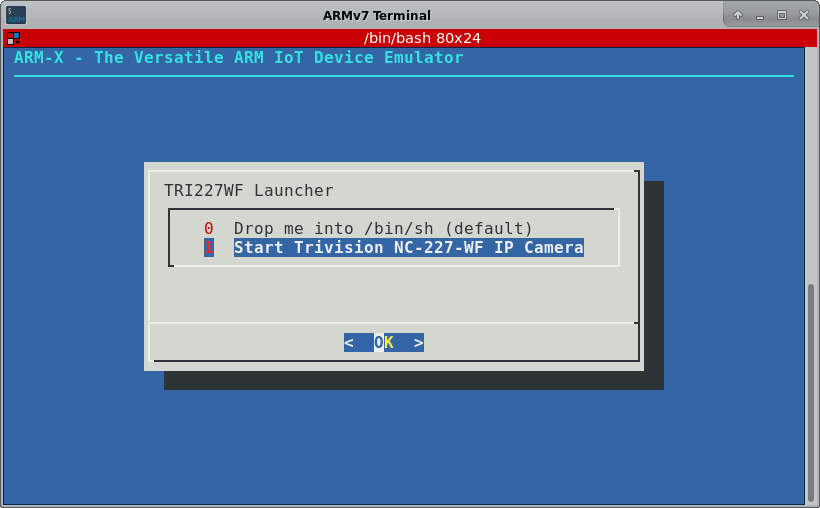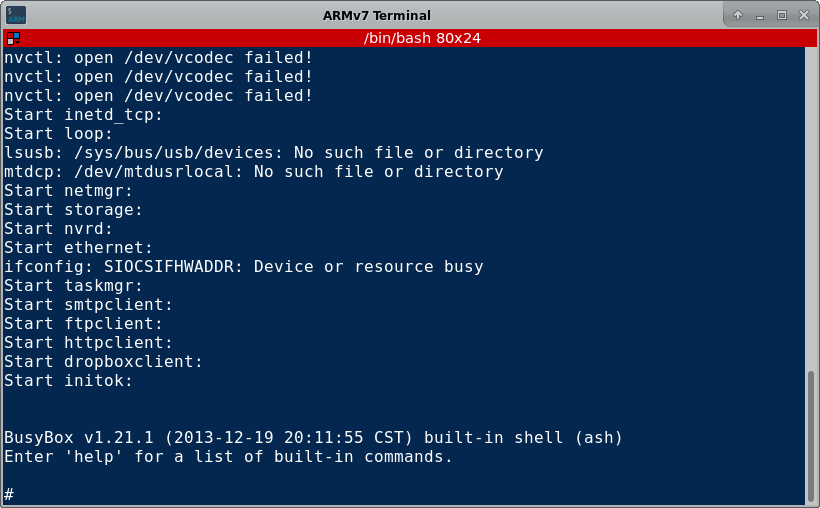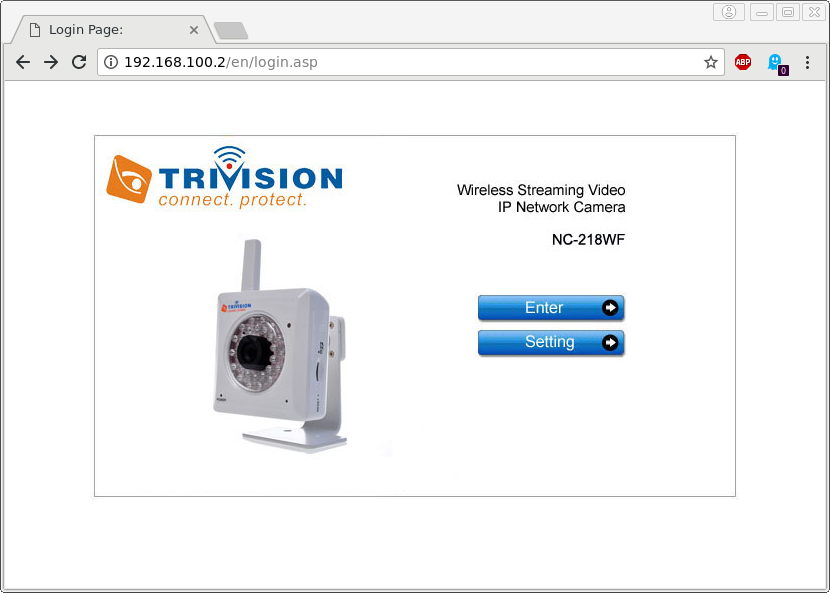by Saumil Shah @therealsaumil
October 2019
The ARM-X Firmware Emulation Framework is a collection of scripts, kernels and filesystems to be used with QEMU to emulate ARM/Linux IoT devices. ARM-X is aimed to facilitate IoT research by virtualising as much of the physical device as possible. It is the closest we can get to an actual IoT VM.
Devices successfully emulated with ARM-X so far:
- D-Link DIR-880L Wi-Fi Router
- Netgear Nighthawk R6250 Wi-Fi Router
- Netgear Nighthawk R6400 Wi-Fi Router
- Trivision NC227WF Wireless IP Camera
- Cisco RV130 Wi-Fi Router
Precursors of ARM-X have been used in Saumil Shah's popular ARM IoT Exploit Laboratory training classes where students have found four 0-day vulnerabilities in various ARM/Linux IoT devices.
ARM-X is a collection of scripts, kernels and filesystems residing in the /armx directory. It uses qemu-system-arm to boot up a virtual ARM/Linux environment. The /armx directory is exported over NFS to also make the contents available within the QEMU guest.
The host system running qemu-system-arm is assigned the IP address 192.168.100.1 and the QEMU guest is assigned 192.168.100.2 via tap0 interface.
The /armx directory is organised as follows:
devices: This file contains device definitions, one per line.run/: This folder contains scripts necessary to parse the device configuration, preload nvram contents and eventually invoke the userland processes of the device being emulated.run/launcher: The main script.launcherparses thedevicesfile and displays a menu of registered devices. Selecting one of the devices will in turn invokeqemu-system-armwith the pre-defined QEMU options, corresponding Linux kernel and extracted root file system registered with the device.template/: Sample configuration and layout for a new device. Make a copy of the template when beginning to emulate a new IoT device.
Each emulated device contains the following files/directories:
config: Contains the device's name and description, ASLR settings, location of its root file system and commands to issue after the kernel has booted up and transferred control to the userland.nvram.ini: Contents of the device's non volatile memory, used for storing configuration settings. Contents ofnvram.iniare preloaded into the emulated nvram before invoking the userland init scripts.kernel/: Contains a Linux kernel compiled (mostly via Buildroot) to closely match the properties of the emulated device such as kernel version, CPU support, VM_SPLIT, supported peripherals, etc.rootfs/: Populated with the uncompressed file system extracted from the device's firmware.run-init: Script invoked by the launcher.
The diagram below describes each stage of ARM-X:
- Invoke
/armx/run/launcher. This will display a menu as shown below. In this example, we select the Trivision TRI227WF Wireless IP Camera.
- Selecting one of the devices will launch it under QEMU. The kernel which is included in the
kernel/directory of the Trivision IP Camera's device configuration, is booted inqemu-system-armand uses a pre-built Buildroot filesystem, which is referred to ashostfs.ext2. Host and guest IP addresses are assigned to192.168.100.1and192.168.100.2respectively.
-
hostfs.ext2contains several scripts and tools useful for running and dynamic analysis of the emulated device. The init scripts inhostfs.ext2mount the/armxdirectory over NFS. Thus, the contents of/armxare shared by both the host and the QEMU guest. -
To kick off the rest of the device startup, connect to the QEMU guest using SSH
ssh root@192.168.100.2. This brings up a menu as shown below:
- Selecting the option to launch the userland init scripts of the device results in
run-initbeing invoked from the corresponding device configuration directory within/armx. First, the contents ofnvram.iniare loaded into the kernel's emulated nvram driver. Next, achrootjail is created using therootfsof the device. Lastly, the registered initialisation commands are invoked in the newlychrootedrootfs, bringing up the device's services and init scripts.
- Once the device has fully "booted up" in ARM-X, it is available for testing and analysis. The image below shows the administration interface of the IP Camera loaded in a browser:
ARM-X was released at HITB+Cyberweek on October 16 2019. Here are the slides from the talk at HITB+Cyberweek:
<iframe src="https://www.slideshare.net/slideshow/embed_code/key/9FqUwLVZaoLaxO" width="595" height="485" frameborder="0" marginwidth="0" marginheight="0" scrolling="no" style="border:1px solid #CCC; border-width:1px; margin-bottom:5px; max-width: 100%;" allowfullscreen> </iframe>An all new class where the ARM IoT EXPLOIT LABORATORY leaves off. The ARM IoT Firmware Laboratory dives into analysis, extraction and emulation of IoT device firmware, using a variety of techniques. Students shall be given ample hands on practice in emulating a variety of IoT devices. Lab exercises feature firmware extraction directly from the hardware, building a custom kernel and buildroot environment, extracting contents of nvram and emulating the device under ARM-X. The class also goes on to fuzzing and exploit development exercises for the emulated devices.
-
44CONnect Training December 2020, London: https://44con.com/44con-training/arm-iot-firmware-laboratory-2020-preview/
-
OffensiveCon 2020, Berlin: https://www.offensivecon.org/trainings/2020/the-arm-iot-firmware-laboratory-2020.html
VMware VM: https://armx.exploitlab.net/armx-preview-vm.zip
VirtualBox VM: (coming soon, but don't hold your breath)
SHA256sum: 53545d507238fa4e63528a762512de0bce97784260c8e4e23512f2f9eb18d350
Github: https://github.com/therealsaumil/armx/
- Clean up the documentation
ARM-X is licensed under the Mozilla Public License v2.0 (MPLv2).
v0.9 22-October-2019, Preview Release

